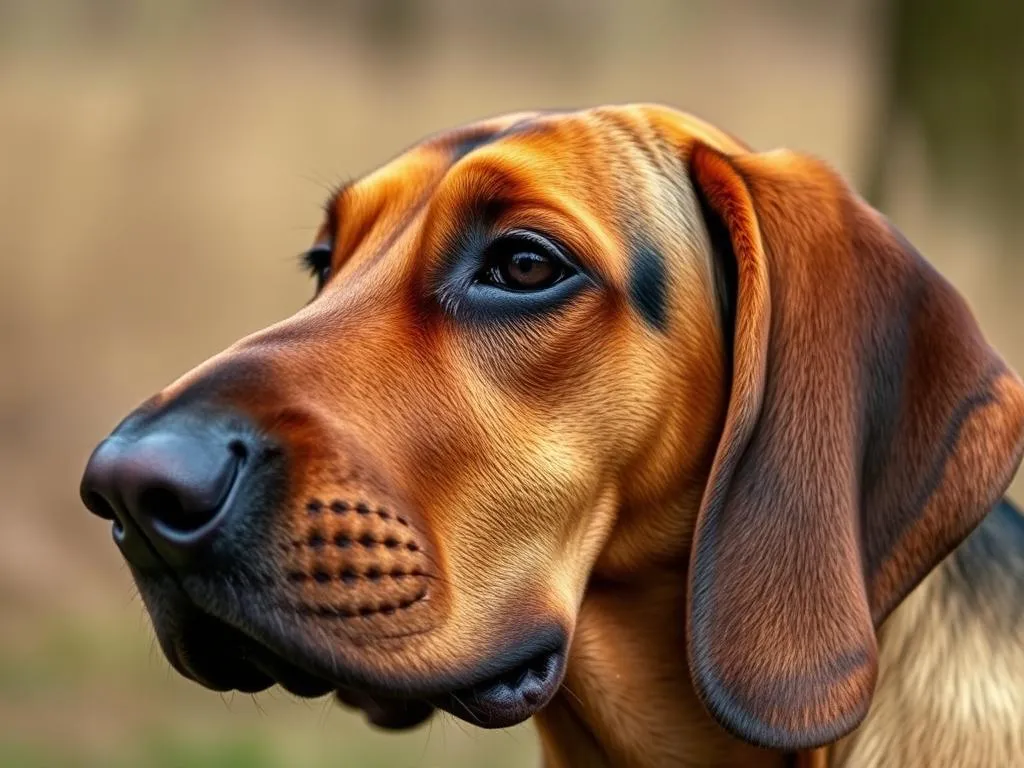
The Bloodhound is a breed that has captivated dog lovers and working professionals alike with its extraordinary sense of smell and gentle temperament. Known for its incredible tracking abilities, the Bloodhound has played an essential role in both history and modern-day society. Understanding the breed’s characteristics is crucial for anyone considering bringing a Bloodhound into their home or those who simply admire this magnificent dog.
History of the Bloodhound
Origins
The Bloodhound traces its ancestry back over a thousand years, with origins believed to be in Europe, particularly in Belgium. Ancient records suggest that this breed was utilized by royalty for hunting purposes. Its name derives from its noble lineage, often referred to as “blooded hounds,” indicating their breeding from aristocratic stock. These dogs were initially bred for their remarkable ability to track scents over long distances.
Development of the Breed
Throughout the centuries, the Bloodhound evolved into the breed we recognize today, thanks to careful breeding practices aimed at enhancing its tracking capabilities. In the 19th century, the breed gained formal recognition, leading to the establishment of breed standards that emphasized its unique traits. The Bloodhound has remained consistent in its purpose, with its keen sense of smell and tracking skills being honed through selective breeding.
Bloodhounds in Law Enforcement
One of the most notable roles of the Bloodhound in modern society is its use in law enforcement. These dogs are indispensable for tracking down criminals and locating missing persons. Their ability to follow a scent trail, even days later, has led to the successful resolution of numerous cases. Bloodhounds have been involved in high-profile criminal investigations, showcasing their skills in both urban and wilderness settings.
Physical Characteristics
Size and Weight
Bloodhounds are large, muscular dogs with impressive stature. Males typically stand between 24 to 27 inches tall and weigh anywhere from 90 to 110 pounds, while females are slightly smaller, ranging from 22 to 25 inches in height and weighing between 80 to 100 pounds. This size, combined with their powerful builds, makes Bloodhounds one of the most recognizable breeds.
Coat and Color
The Bloodhound has a short, dense coat that is weather-resistant and easy to maintain. Common color variations include black and tan, liver and tan, and red. The coat’s texture not only serves a functional purpose but also contributes to the breed’s distinctive appearance.
Distinctive Features
One of the most striking features of the Bloodhound is its long, droopy ears and wrinkled skin, which give it a unique expression. These physical traits are not merely aesthetic; the ears help to trap scent particles, while the wrinkles assist in directing scents toward the nose. The Bloodhound’s nose is one of its most remarkable attributes, possessing an estimated 300 million scent receptors, making it the superior tracker among dog breeds.
Temperament and Behavior
General Temperament
Bloodhounds are known for their friendly and affectionate nature. They are gentle giants, often forming strong bonds with their families. Their loyalty and dedication make them excellent companions, as they thrive on human interaction.
Socialization Needs
Early socialization is crucial for Bloodhounds to develop well-rounded personalities. Exposing them to various environments, people, and other animals helps mitigate any potential behavioral issues. They generally get along well with children and other pets, making them suitable for family settings.
Common Behavioral Traits
As a scent hound, the Bloodhound possesses strong instincts that can sometimes lead to stubbornness and independence. Training a Bloodhound requires patience and consistency, as they may become easily distracted by scents. However, their loving nature and eagerness to please can make training rewarding when approached with the right techniques.
Care and Training
Basic Care Requirements
Caring for a Bloodhound involves regular grooming, especially due to their loose skin and long ears, which require routine cleaning to prevent infections. A balanced diet is essential for maintaining their health, with high-quality dog food tailored to their size and activity level. Regular exercise is necessary to keep Bloodhounds physically fit and mentally stimulated, as they are energetic dogs that enjoy outdoor activities.
Training Techniques
Training a Bloodhound can be a fulfilling experience, but it requires understanding their unique temperament. Positive reinforcement techniques, such as treats and praise, work best. Consistency is key, as Bloodhounds may test boundaries if not guided firmly yet lovingly. Engaging in scent work or tracking activities can also be an excellent way to channel their natural instincts constructively.
Health Considerations
Bloodhounds are generally healthy, but like all breeds, they are prone to certain health issues. Common concerns include hip dysplasia, ear infections, and obesity. Regular veterinary check-ups, a balanced diet, and appropriate exercise can help mitigate these risks and ensure a long, healthy life.
Interesting Facts about Bloodhounds
World Records
Bloodhounds have made their mark in the world of records, particularly for their extraordinary tracking abilities. Some Bloodhounds have tracked scents over distances exceeding 300 miles! Their remarkable noses have also been recognized in various dog shows and competitions, showcasing their skills and impressive lineage.
Famous Bloodhounds in Pop Culture
Bloodhounds have made notable appearances in movies and television, often depicted as loyal companions or skilled trackers. One famous Bloodhound is “Hooch” from the film Turner & Hooch, who showcased the breed’s affectionate nature while also being a capable partner in solving crimes.
Myths and Misconceptions
Despite their popularity, several myths about Bloodhounds persist. One common misconception is that their droopy ears and wrinkles make them prone to constant drooling. While Bloodhounds do drool more than some breeds, proper care and hygiene can manage this. Another myth is that they are not suitable as family pets, but their gentle temperament and loyalty make them wonderful family companions.
Conclusion
The Bloodhound is a breed rich in history, known for its incredible tracking abilities and endearing personality. From their ancient origins to their role in law enforcement today, Bloodhounds have proven themselves as invaluable companions and working dogs. Their unique physical characteristics, friendly temperament, and interesting facts make them stand out in the canine world. For those considering welcoming a Bloodhound into their home, understanding these traits is essential for fostering a loving and fulfilling relationship.
FAQs
What is the lifespan of a Bloodhound?
The average lifespan of a Bloodhound is typically between 10 to 12 years, although with proper care, some may live longer.
Are Bloodhounds good family pets?
Yes, Bloodhounds are known for their friendly and affectionate nature, making them great family pets. They typically get along well with children and other animals.
How much exercise do Bloodhounds need?
Bloodhounds require regular exercise to stay healthy and happy. Daily walks, playtime, and mental stimulation through scent work or tracking activities are recommended to keep them engaged.









